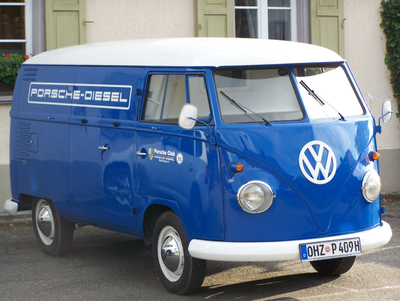Volkswagen Transporter T2 (Facelift 1970)
Introduction
The Volkswagen Transporter T2, also known as the Volkswagen Bus or Kombi, is an iconic vehicle that has become synonymous with the hippie movement of the 1960s. The T2 was the second generation of the VW Transporter and was introduced in 1967. In 1970, the T2 received a facelift that brought significant design changes and improvements. Let's take a closer look at the Volkswagen Transporter T2 (facelift 1970) and how it became an icon in its own right.
Design and Features
The facelifted version of the T2 featured updated front and rear styling. The biggest change was the introduction of larger, rectangular headlights that replaced the round ones from the previous models. The front grille was also redesigned, giving the T2 a more modern and aggressive look. At the rear, the taillights were reshaped and the VW logo was moved to the center of the engine lid.
Inside the T2, the facelift brought some notable improvements as well. The dashboard was redesigned, creating a more ergonomic and user-friendly layout. The instruments and controls were placed within easy reach of the driver. The seats were updated for increased comfort, and the cargo area was made more practical with improved storage options.
Performance and Engine Options
The facelifted T2 retained the same engine options as its predecessor. The most common engine was the air-cooled 1.6-liter flat-four engine, which produced around 50 horsepower. This engine was reliable and easy to maintain, making it popular among VW enthusiasts. However, in later years, larger engines were introduced to meet increasing performance demands.
The T2 was known for its exceptional handling and drivability, thanks to its rear-engine, rear-wheel-drive layout. The lightweight construction and compact dimensions made it nimble and easy to maneuver, even in crowded city streets. It offered a smooth and comfortable ride, making it a perfect companion for long-distance travels.
Popularity and Cultural Impact
The Volkswagen Transporter T2 was more than just a means of transportation. It symbolized a free-spirited lifestyle and a sense of adventure. Its association with the hippie movement and its appearance in popular culture, such as movies and music, solidified its place in history as an icon of the era.
The T2 also became a versatile vehicle, serving as a camper van, family car, and work vehicle for many. Its spacious interior allowed for various customization options, and it became a popular choice among car enthusiasts who loved its retro charm and unique character.
Legacy and Collectibility
Today, the Volkswagen Transporter T2 (facelift 1970) is highly desirable among collectors and enthusiasts. Its cult status has resulted in a strong following, with numerous VW clubs and events dedicated to the T2. Well-preserved and restored examples command high prices in the collector car market.
The T2's enduring appeal can be attributed to its timeless design, simple mechanicals, and its association with a bygone era. It remains a symbol of freedom, adventure, and individuality. For those who appreciate its unique charm, the T2 will always hold a special place in automotive history.
Conclusion
The facelifted version of the Volkswagen Transporter T2 in 1970 brought significant design changes and improvements, elevating the iconic vehicle to new heights. With its updated styling, improved interior, and reliable performance, the T2 captivated the hearts of enthusiasts and became a cultural symbol. Today, it remains highly sought after and continues to inspire a sense of nostalgia and adventure. The Volkswagen Transporter T2 (facelift 1970) truly deserves its place in automotive history.


